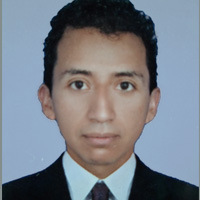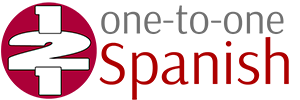Our Professional Medical Spanish program was created for healthcare professionals and students who want to master the use of Spanish in medical and health-related areas. It is intended for students who already have an intermediate level of Spanish as the principal focus is on medical usage, introducing materials from a wide range of specialty areas as appropriate to each student.
The course has been developed and offered since 2012 by our partner Spanish school in Ecuador - Yanapuma Spanish School. The course is 80-hours and comes with a certificate of completion.
It is ideal for all those intending to speak Spanish in a professional medical setting and dealing with Hispanic colleagues, staff and patients.

Pablo specializes in teaching Spanish language for healthcare professionals
The teacher in charge of the course is Pablo. He is a native Spanish speaker born in Quito (Ecuador).
Lessons are on a direct one-to-one basis with plenty of opportunities for dialogue.
The course includes a wealth of electronic materials that are yours to keep - medical texts and atlas of the human body in Spansh, videos, audios, scientific papers, quizzes and exercises, as well as specialty-specific materials.
Module 1
- Greeting your patients in Spanish
- Beginning a patient interview
- Parts of the body
- Medical complaints
Module 2
- Taking vital signs in Spanish
- Internal organs
- Cognates and health care personnel
- Chief complaints: giving instructions
Module 3
- Chief complaint: basic interview
- Common symptoms
- How to ask the patient about their symptoms
- How does the patient feel?
Module 4
- Signs and symptoms: skin, mouth, eyes, ears, lungs, heart, gastro-intestinal system, breasts, genitourinary system, brain, arms and legs, immune system issues
- Positioning the patient
Module 5
- Qualifying and quantifying the pain
- Abdominal pain
Module 6
- Asking the patient about their feelings
- Talking about what to do after the consultation
- How to make appointments
- In the doctor's office
Module 7
- Talking about family’s diseases
- Taking a patient history I
- Basic illnesses
- Diet
Module 8
- Taking a patient history II: lifestyle
- Commands in the consultations
- Physical exam
- Neurological exam
Module 9
- Treatment procedures
- Prescriptions
- Diet instructions
Module 10
- Blood tests
- Urine tests
- Sputum tests
- Skin tests
- Taking X-rays
- Results and diagnosis
Module 11
- Instructions for birth control
- Prenatal instructions
- The delivery
Module 12
- Postpartum visits
- Well-baby visit
- A pediatric visit
- Pattern for growth and development
Module 13
- Taking a patient history III: habits
- In the dentist's office
- Consultations: pap smear
- Dermatology
- Ophthalmology
Module 14
- Sexually transmitted diseases
- Patients with high blood pressure
- Patients with diabetes
- Myocardial infarct
Module 15
- Emergency room
- Car accidents
- Occupational therapy
Module 16
- Psychiatry and psychology
- Abuse: rape victims
- Anxiety
- Substance abuse
- Sleep problems
Module 17
- Religious beliefs
- The Hispanic patient
- Doctor-patient relationship
- Typical cultural differences
- Culture-bound syndromes
Medical Spanish depending on specialization
Module 18
- Heart and coronary circulation
- Examining the cardiovascular system
- Medical history
- Cardiovascular procedures
Module 19
- Respiratory system
- Examining the respiratory system
- Medical history
- Respiratory procedures
Module 20
- Brain
- Spinal cord and spinal nerves
- Examining the nervous system
- Medical history
Module 21
- Gastrointestinal system
- Examining the gastrointestinal system
- Medical history
- GI procedures
Module 22
- Female reproductive health: female genitalia and breasts
- Male reproductive health: male genitalia
- Urinary function: kidneys
- Examining the genitourinary and reproductive systems
- Medical history
- Kidney and urinary tract procedures
Module 23
- Skeletal muscles
- Bones of the human skeleton
- Examining the musculoskeletal system
- Medical history
Module 24
- Endocrine system
- Immune system
- Examining the immune and endocrine systems
- Medical history
- Nutrition and diet therapy
Module 25
- Skin and hair
- Examining the skin, hair and nails
- Medical history
Module 26
- Eyes
- Ears
- Mouth
- Examining the eyes, ears, nose and throat
- Medical history
Module 27
- Evaluating mental health
- Therapeutic communication techniques
- Medical history
Module 28
- Surgery: general preparations before, during and after surgery
- Anesthesia: managing pain
- Medical equipment and supplies
Module 29
- Pharmacy and medication
